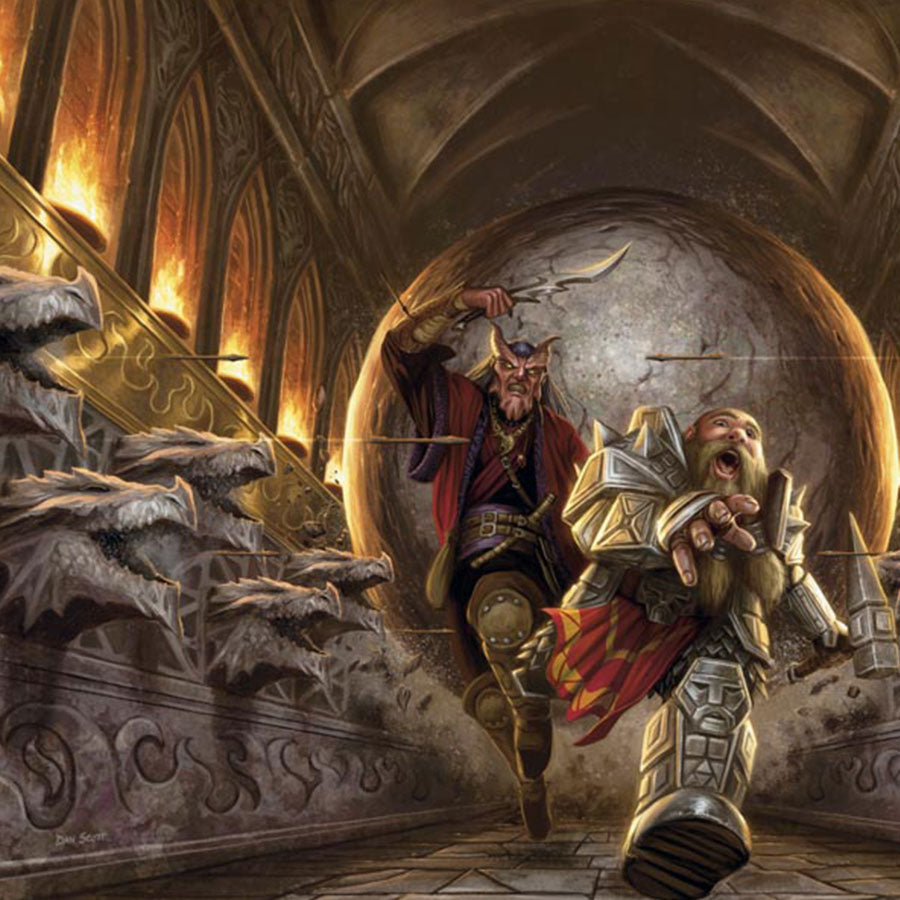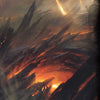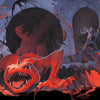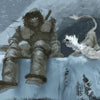How to Create and Use Traps in D&D

When you’re thinking about hosting your latest epic campaign you spent ages working on, you’re probably wondering what you can add to make it stand out and add some novelty. Something new to keep the usual players on their toes so they never doubt your dungeon master abilities! The tools for that job are traps. They’re a simple and effective way to add new challenges to a dungeon, and make it feel more realistic. After all, if the treasure was so easy to find, and safe to extract, why is it still there in the first place?
It’s important not to overdo traps - no one likes unnecessary hp taxes or a potential TPK. But when you put a little extra work into their design, traps can enrich encounters and give a sense of achievement when the rogue alerts his companions in time, or the party overcomes a potentially deadly challenge together. Keep reading our guide to creating successful traps in Dungeons and Dragons.
Here we discuss how traps work, how to create traps, and how best to use traps in your D&D game
By the way, if you play D&D 5e or Pathfinder 2 online and are a bit frustrated with having to set up maps, tokens, and lighting in your VTT, you should check out our premium Foundry VTT modules. Get professionally developed 5e and PF2e adventures and monsters for your games…and we do most of the work for you. All you need to do is install the module and start playing!
Watch or listen to this article by clicking the video below.
Part 1: How Traps Work
One wrong step in an ancient tomb triggers bellows hidden behind the wall to expel a deadly poisonous gas into the corridor. Inadvertently stumbling over a trip wire causes the beams to either side of the corridor to fall, collapsing the ceiling atop you.
Traps can be found almost anywhere in a D&D game and are a time-honored tradition. I usually try to include at least one trap in all the D&D adventures I create.
Triggers
The first thing all traps have is a TRIGGER. You see, traps lie dormant in the dungeon—or other location where an adventure takes place—until brave adventurers or foolish townsfolk come wandering through. The job of a trigger is to carry that trap from its inactive waiting state to its “hello, I am here, and I’m about to kill you state”.
Typical trap triggers are pressure plates on the floor, trip wires strung across the hallway, magical proximity detectors, or opening something, such as a door or container. Basically, traps are triggered when a creature goes somewhere or touches something the trap’s creator wanted to protect.
Effects
When a trap is triggered, there is of course an effect—something horrible that happens to the poor sap who set the trap off.
The effects of traps can range from inconvenient to deadly, and can make use of elements such as arrows, spikes, blades, poison, toxic gas, blasts of fire, and deep pits.
And if you want to get particularly nasty, combine multiple elements to kill, injure, contain, or drive off the moron dumb enough to trigger the trap.
So, let’s say you have a pit that a character falls into, taking damage as they land at the bottom. Then, a pressure plate triggers a lid to close on the pit, trapping them inside. Then, poisonous gas seeps from the walls of the pit, putting the character into a deep slumber. Next, the pit begins to fill with water, causing the character to drown and die.
Detecting Traps
Smart adventurers—or wise ones that have learned from prior bad experiences—will keep their eyes out for traps as they move through a dungeon or other adventure location.
A player can have their character look for traps by making a Wisdom (Perception) check opposed by the DC that you the dungeon master set for spotting the trap. I usually have the DC be between 13 and 20, based on how well hidden the trap is and the level of the adventure.
In the case of magical traps, such a glyph of warding, the spell detect magic can be used to find the trap. Of course, a perception check might also help the character spot the runes of magic carved into a surface.
Oh, and if you’re wondering if characters can find traps using their PASSIVE perception—so they don’t have to actively declare they’re looking for a trap—I’ll delve into my thoughts on that a little later.
Understanding Traps
So, spotting a trap only tells the characters that there is a pressure plate, trip wire, or other trigging mechanism. It doesn’t tell them what the trap actually is or does.
In order to figure out what the nature of the trap is—scythe blades, poison darts, jet of fire—a character makes an Intelligence (Investigation) check to determine exactly what the trap is, and how it functions.
Again, the dungeon master sets the difficulty class for this check, and I usually keep it between 13 and 20, just like the DC for detecting traps.
Disabling a Trap
Once the brave and hardy adventurers have found a vicious trap in their path, they will most likely want to disable it or otherwise bypass the trap.
Unless, of course, there is a barbarian in the group, and then they might just decide to take it in the face, because, well, that’s how barbarians detect and disable traps in D&D.
If they were successful in finding the trigger, bypassing the trap might be as simple as jumping over a pressure plate, for instance, and thus not triggering the trap at all.
If they were successful in understanding how the trap works—for example, poisonous gas that is expelled from two tubes in the walls—they might do something like packing the tubes tightly with rags so that the poisonous gas can’t get out.
My point here is that often times players’ creativity can allow them to either bypass or disable a trap. Thieves Tools are NOT the only way to disable traps.
However, one way that adventures can also deal with traps—especially rogues—is through the use of the aforementioned thieves’ tools.
Basically, once a character has found the trigger for the trap, they can attempt to disable that trigger. And, of course, once the trigger has been fouled, there is nothing to cause the trap’s effects, and it is now safe.
To disable a trap with thieves’ tools, a character makes a Dexterity (Thieves’ Tools) check opposed by the difficulty class that the dungeon master sets. And once again, I’ve found that a DC between 13 and 20 works fairly well.
By the way, the DCs I’ve been mentioning thus far are general guidelines. I’ll get more into specifics based on party level in just a bit.
But what about disabling magical traps? In most cases, it takes magic to disable these. In particular, casting dispel magic on a magical trap is the way to go.
Since dispel magic is a level 3 spell, I would rule that any magical trap based on a level 3 or lower spell would simply be disabled by the casting of that spell. For higher-level spell traps, the character would need to make a spellcasting ability check as described in the dispel magic spell to see if the magical trap is disabled or not.
Sometimes, too, I’ll rule that dispel magic only SUPPRESSES the trap for a certain amount of time, perhaps 10 minutes or so. It depends on the nature of the magical trap, how powerful it is, and how powerful the creature or spellcaster who created it.
Part 2: Creating a Trap
First, I want to mention that if you’re looking for tons of free traps you can use, feel free to check out all the free D&D traps we have available for you.
Now, there are two different categories of traps: simple and complex. A simple trap has effects that are resolved instantaneously when the trap is triggered. For instance, a character steps on a pressure plate, and spikes spring out from the wall.
However, a complex trap works similarly to a combat encounter. When a complex trap is triggered, all the characters roll initiative, different effects of the trap have their own initiatives, and then what happens is resolved in rounds.
An example of a complex trap is the garbage shoot trap in Star Wars, Episode IV, A New Hope. The heroes find themselves trapped in a trash compact whose walls are slowly closing in. The heroes are then trying to stop the walls while also finding a way out.
Midway through the trap, another effect of the trap reveals itself, and a monster pulls Luke under the water in the trash compactor. Then the heroes have to save him while continuing to slow the walls down and search for a way out.
Now, in this article I’m only going to be discussing SIMPLE TRAPS. If you’d like to learn more about COMPLEX TRAPS, check out this video on the topic.
Step 1: Determine the Purpose of the Trap
Why does the trap exist? Is it there to simply sound an alarm? Should it delay intruders until guards can respond to their presence? Perhaps the trap restrains them.
Or—like many fine traps in D&D—perhaps the trap is there to harm, maim, and murder the plucky adventurers who would dare trespass in part unknown.
Step 2: Determine the Type of Trap
Is this a mechanical trap that relies on gears and other mundane mechanisms to trigger and deploy its effects? Or is it a magical trap that relies on…well, magic?
Step 3: Determine the Level and Severity of the Trap
In this step you decide what level of party the trap is for, and how deadly the trap will be, also called its severity.
Essentially, the attack bonus of a trap, the save DC to resist its effects, and the damage it deals can vary depending on the trap’s severity and the level for which it is designed.
I recommend that you use the chart on page 116 of Xanathar’s Guide to Everything when deciding upon these elements. And if you don’t have Xanathar’s, page 121 of the Dungeon Master’s Guide also has a chart you can use, but the chart in Xanathar’s is better.
For instance, referencing the chart, if I’m going for a dangerous trap then I’ll set the DC for the saving throw and ability checks somewhere around 15. If the trap uses an attack bonus, it’ll have roughly a +8 to attack. And if the trap is designed for levels five through ten, I’ll have the damage average somewhere around 22.
There is also a chart in Xanathar’s that gives you guidelines on what level spells to use in traps depending on the party’s level and the severity you’re going for. For example, if I want a dangerous magical trap for my level five to ten party, I would use a third-level spell for the trap. Such as…FIREBALL!
The one thing, however, that is not well represented in these charts is how saving throws and difficulty classes for ability checks should scale with level.
For instance, if I create a moderate severity trap for my level 20 party but use the saving throw DC of 10 suggested in the charts, it would be an absolute joke. Very few characters would ever come anywhere close to failing a DC 10 saving throw at higher levels.
So, my suggestion is to bump up the saving throw DCs, attack bonuses, and skill check DCs of traps based on the level the trap is designed for. You can see here the modified chart that I use, and I feel this works better for traps at higher levels.
|
Trap Severity |
Level 1-4 |
Level 5-10 |
Level 11-16 |
Level 17-20 |
|
Moderate |
10 / +5 |
10 / +5 |
13 / +8 |
15 / +10 |
|
Dangerous |
15 / +8 |
15 / +8 |
18 / +11 |
20 / +13 |
|
Deadly |
20 / +12 |
20 / +12 |
23 / +15 |
25 / +17 |
In a nutshell, for levels 11 through 16, I would increase the saving throw DC, attack bonuses, and skill check DCs by three. And then for levels 17 through 20, I would increase them all by another two points.
Of course, don’t forget that as the dungeon master, you can tweak these numbers as desired for your own groups. For instance, I sometimes decide that the DC for finding a trap might be fairly high, but once they find it, disabling it isn’t too hard. Or vice versa.
Step 4: Determine What Triggers the Trap
This step is fairly straightforward. Simply decide what sets the trap off. I’ve given some examples of triggers already, but your imagination is the only limit on what a trigger could be.
Step 5: Determine the Effects of the Trap
Do spikes spring out of the ground? Do poisonous darts fly from the walls? Does acid spray from the mouth of a statue nearby? Again, the effects are limited only by your creativity.
When you’re determining the effects of a trap, this is when you’re going to decide what the saving throw DC or the trap’s attack bonus is, based on all the charts we went over in step 3. If the trap causes damage, you’ll decide what that is, too, again using those same charts.
Step 6: Determine Countermeasures for the Trap
In this step, you decide several things: how characters are able to detect the trap, how they can determine what the trap does and how it works, and how they can disable or bypass the trap.
And when determining the DCs needed to do any of these things, you’ll once again reference the charts we discussed in step 3.
Okay, an example to illustrate example what I mean here. Let’s say that when someone steps on a pressure plate, spikes come out of the wall.
The first countermeasure to determine is that for detecting the trap. If a character searches the hallway, they make a Wisdom (Perception) check with a DC of 15. If they succeed, they notice the pressure plate.
Now you create the countermeasure for figuring out what the trap does. If a character studies the pressure plate, they make an Intelligence (Investigation) check with a DC of 13, let’s say. If they succeed, they notice holes in the wall nearby—concealed behind some moss—what appears to be spikes within the holes, and then deduce that stepping on the pressure plate causes the spikes to shoot out.
The final countermeasure is for disabling the trap. You could say that someone who uses Thieves’ Tools and succeeds on a DC 15 Dexterity (Thieves Tools) check disables the pressure plate mechanism. You might also note that the pressure plate isn’t that big and can simply be jumped over.
Step 7: Determine Where to Place the Trap
Where to place the trap is extremely important. Remember, bad guys don’t go to all the work of making a trap just for the fun of it. Thus, they are going to place the traps in locations where they will be most effective.
Choke points in the dungeon where intruders must pass through to go any further into the dungeon are good spots. This ensures that you only need the one trap, and not multiple traps to protect various entry points.
Traps will also be placed near places or objects their creators are trying to protect. If you want to protect the treasure in a room, put the trap on the door. Something important in the chest? Well, the trap probably is on the chest itself—or, on the wall NEXT to the chest.
We Make Playing Online with Foundry VTT Easier Than Ever
Look, running a 5e or Pathfinder 2e game can be challenging, and you’re probably busy enough with adult responsibilities as it is. Why not let the DM Lair team do some of the work for you?
With our professionally developed Foundry VTT modules, you’ll get expertly designed adventures and monsters with the following features:
- Scenes pre-configured with walls, lights, and high-res tokens
- Highly detailed immersive adventure maps
- Journal entries for the entire contents of adventures
- Read-a-loud text, interactive monster stat blocks, roleplaying notes, encounter notes, and more
Don’t spend another moment scrambling to put together an adventure and set everything up in Foundry before your next 5e or PF2e game session! Let DM Lair Foundry modules remove the frustration from GMing.
-
Posted in
Game Master How-To Articles







